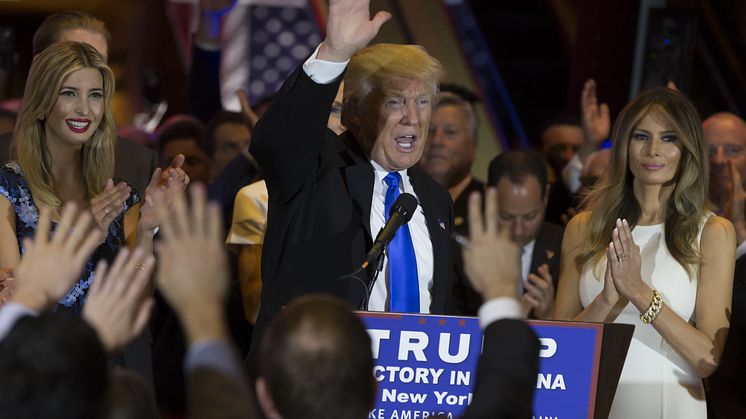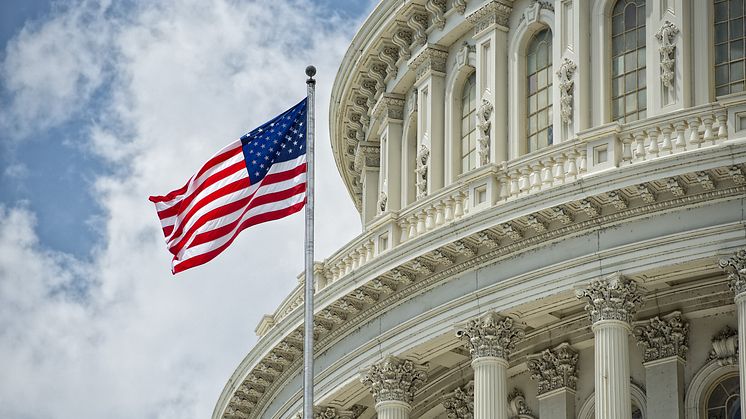Press release -
EXPERT COMMENT: Ranking the US’s presidents isn’t just a game for Americans
Michael Patrick Cullinane, Reader in US History at Northumbria University; Iwan Morgan, Professor at UCL; and J Simon Rofe, Senior Lecturer at SOAS University of London discuss the context of Presidents' Day for The Conversation.
Of all the US’s public holidays, Presidents’ Day is perhaps the least faithfully observed. Countless sales events far outnumber parades or fireworks displays, and most Americans spend it shopping for discounted appliances or visiting car dealerships draped in red, white, and blue bunting. So, why no celebrations?
Well, this year there’s a different reason. Simply put, the mood is less than jubilant; mass protests, organised marches, and near-daily anti-Trump activities have been rumbling since the 45th president was inaugurated. Some have argued for a “Not My President Day,” a nationwide protest against Trump to capitalise on the popular #notmypresident meme.
But it wasn’t always this complicated. For many years, Presidents’ Day was a celebration of one president in particular, usually ranked as the “greatest”: George Washington. Held on Washington’s birthday (February 22), the holiday was officially added to the calendar in 1879 as a unique tribute, but many states also honoured Abraham Lincoln on his birthday (February 12) and contended that Lincoln was due the same esteem as Washington. Come 1951, the government considered appeals for a joint Washington-Lincoln birthday but settled instead on a holiday that recognised the office and all its officeholders, rather than the two most often revered as great presidents.
It never really took off. Go into a car dealership on Presidents’ Day and you won’t see glossy posters featuring Warren G. Harding, James Buchanan, or Grover Cleveland. Lincoln and Washington remain exceptional. They are also remembered for uniting the country, even if Lincoln’s election first divided it. Advertisers tend to ignore the flops and purposely avoid presidents with lospided fanbases. Ronald Reagan remains a popular former president, but only on one side of a great partisan divide.
This raises a perpetually interesting question: how do we measure success and failure in presidential leadership? Do we follow our gut? Perhaps we can use Supreme Court Justice Potter Stewart’s famous criteria for what constitutes obscenity: “I know it when I see it.” Or perhaps – if we dare – we could ask the experts.
In 1948, Harvard professor, Arthur Schlesinger, Sr, introduced the “ranking game”, a survey that asked American history and politics scholars to categorise presidents from “greats” to “failures”. He repeated the survey in 1962, and his namesake son continued the practice until 1996. Tapping into our all-too-human desire to classify and compare, surveys of presidential leadership are now produced almost annually by organisations as diverse as Sienna College, Washington-based The Brookings Institution, Newsweek, and C-SPAN.
These surveys have different methodologies and varying results, but they share one thing in common: they rank presidents from an American perspective. That is, participants are affiliated with American universities, think tanks, newspapers, or scholarly associations.
The first survey of scholars outside the US took place in 2011 and included academics from the UK and Ireland. Organised by the US Presidency Centre (now hosted at University College London) it offered an interim assessment of Barack Obama’s presidency, and prompted UK-based scholars to conduct a follow-up survey to make a final assessment of Obama and his predecessors. Compared to a range of recent US surveys, the results are plainly comparable in some ways, and startlingly different in others.
At arm’s length
Barack Obama fared far better from scholars in the UK: they ranked him 7th, putting him in the same league as near-greats such as Woodrow Wilson and Harry S. Truman. The Brookings Institution, on the other hand, ranked Obama 17th – one spot behind George H. W. Bush. Obama’s high ranking in the UK survey is a sign that foreigners viewed his presidency as a greater success than Americans.
Likewise, UK respondents put Franklin Roosevelt atop their table. Most American surveys do include him in the pantheon of greats, but few give him the top prize. That’s probably because American conservatives often complain that Roosevelt’s New Deal programme grossly over inflated the role of government, whereas a welfare state is far less controversial in the UK.
These differences aside, much of the UK survey aligns with its US counterparts, particularly at the top and bottom of the table. Washington, Lincoln, and Franklin Roosevelt rank highest; Buchanan, Harding, Andrew Johnson and Franklin Pierce come last. This remarkable consistency might just mean that scholars on each end of the Atlantic share similar views on presidential leadership. Although critics of these ranking games complain that the historical juxtaposition of presidents is about as useful as comparing apples and oranges, the results show that over time and political cultures, our sense of success and failure is noticeably consistent.
If you want a full breakdown of the second UK Survey of US Presidents, visit the Presidential History Network site. (A full analysis of the results will be available on March 8.) And if you’re an advertiser considering how best to market your wares on Presidents’ Day, you might want to consider adding Franklin Delano Roosevelt to the mix – especially if you do business in the UK.
This article was originally published by The Conversation UK. Read the orginal article here.
Topics
Northumbria is a research-rich, business-focused, professional university with a global reputation for academic excellence. To find out more about our courses go to www.northumbria.ac.uk
If you have a media enquiry please contact our Media and Communications team at media.communications@northumbria.ac.uk or call 0191 227 4571.








